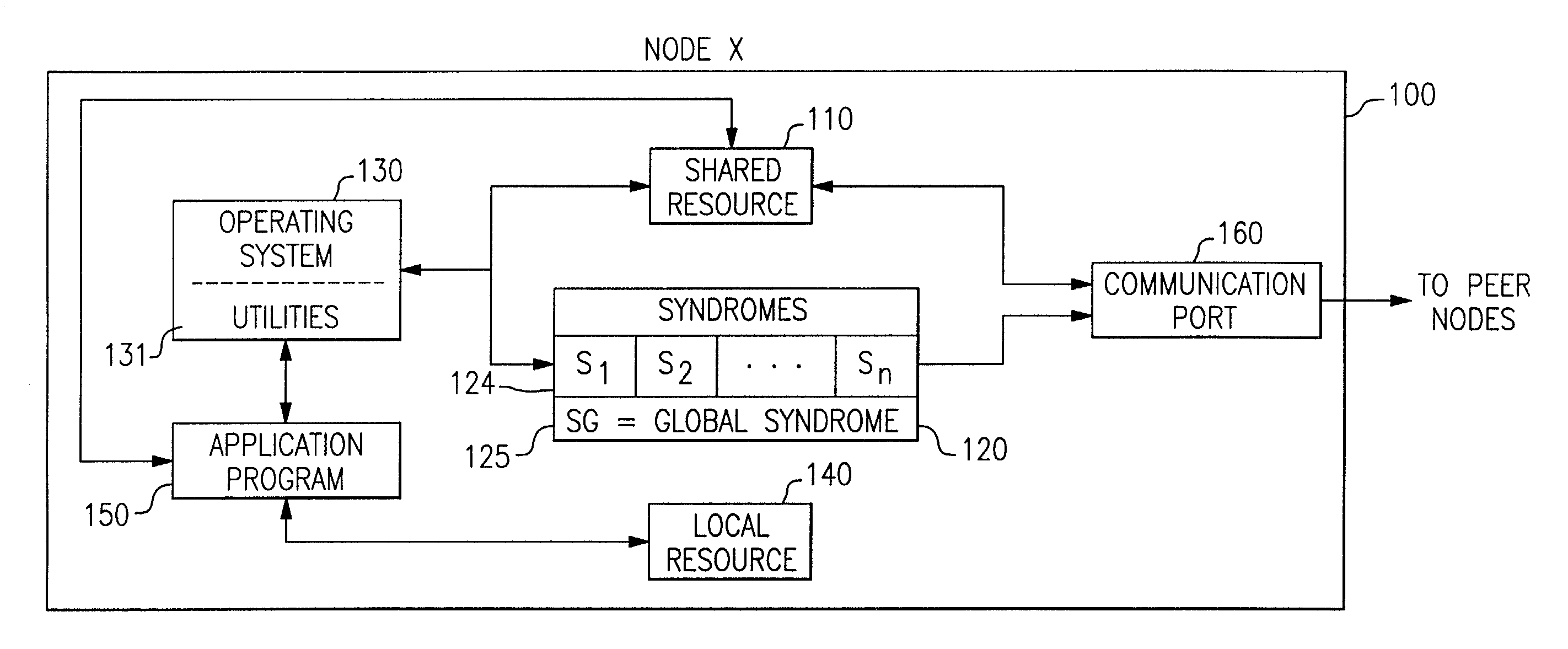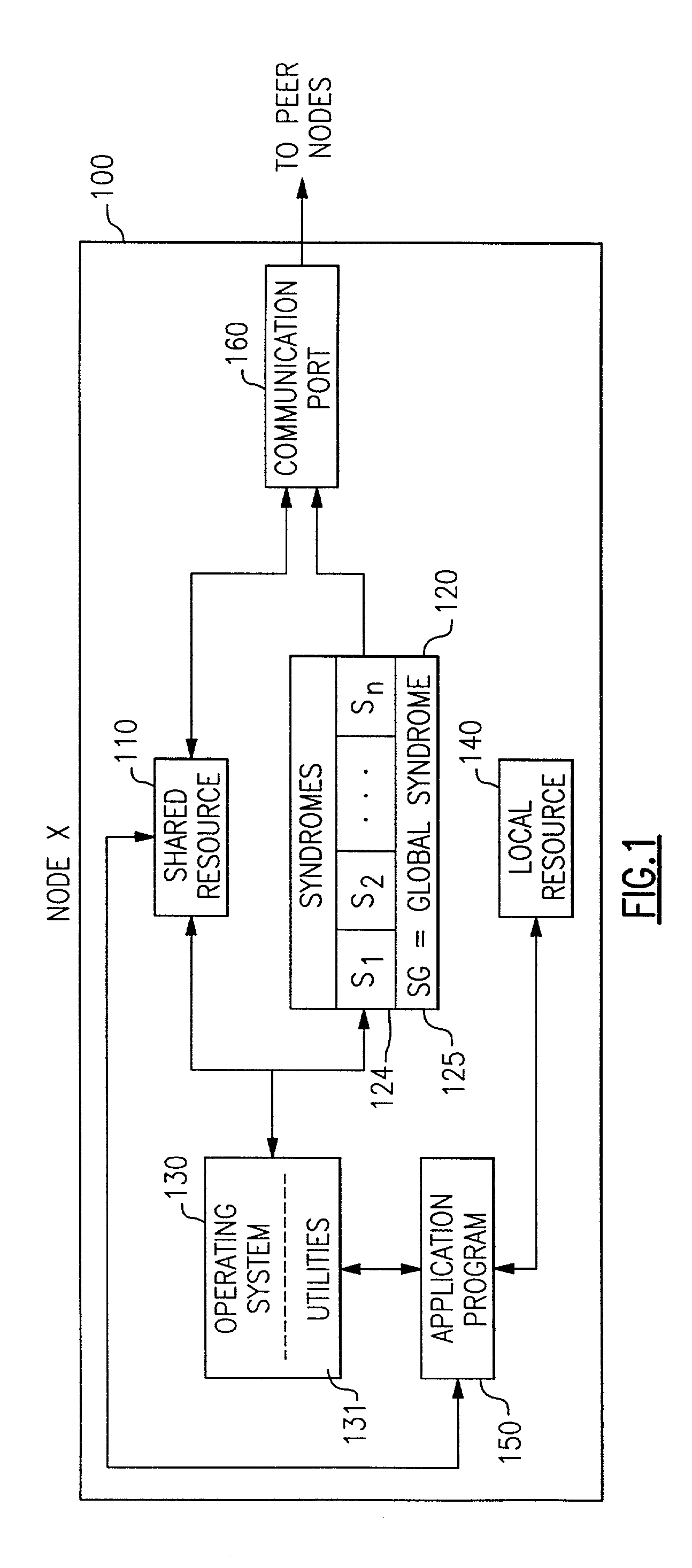Efficient method of globalization and synchronization of distributed resources in distributed peer data processing environments
a technology of distributed resources and peer data processing, applied in the field of distributed data processing environments, can solve problems such as performance degradation, peer process work incorrect or even fail, severe and negative impact on system performance,
- Summary
- Abstract
- Description
- Claims
- Application Information
AI Technical Summary
Benefits of technology
Problems solved by technology
Method used
Image
Examples
Embodiment Construction
[0032]A proper understanding of the operation of the present invention is best had from first considering the problems intended to be solved. These problems include:[0033]Distributed applications with peer processes running on network connected nodes find it difficult to maintain replicated globalized resource in a consistent and efficient manner.[0034]Globalization and synchronization of distributed resources is generally not optimized, especially during the startup of peer processes.[0035]Previously isolated peer processes, which miss a notification of a change of the distributed resources, will still use the old resource content of the globalized resource while other peer processes will use newer (inconsistent) contents.
[0036]The present invention solves the above problems by providing the following:[0037]The infrastructure of the present invention provides a mechanism to guarantee synchronous notification between peer processes. Consistent notification is provided to application...
PUM
 Login to View More
Login to View More Abstract
Description
Claims
Application Information
 Login to View More
Login to View More - R&D
- Intellectual Property
- Life Sciences
- Materials
- Tech Scout
- Unparalleled Data Quality
- Higher Quality Content
- 60% Fewer Hallucinations
Browse by: Latest US Patents, China's latest patents, Technical Efficacy Thesaurus, Application Domain, Technology Topic, Popular Technical Reports.
© 2025 PatSnap. All rights reserved.Legal|Privacy policy|Modern Slavery Act Transparency Statement|Sitemap|About US| Contact US: help@patsnap.com



